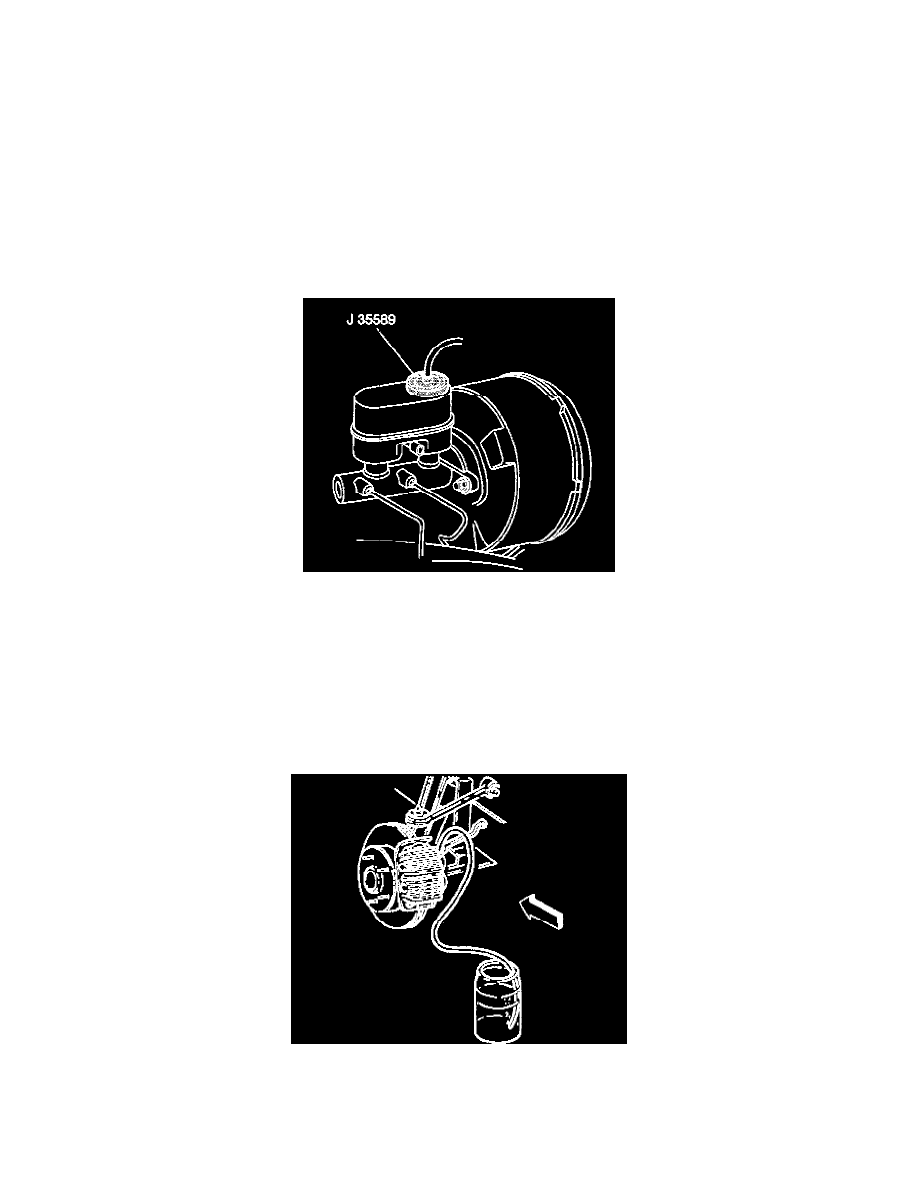Corvette V8-5.7L VIN G (1997)

Brake Bleeding: Service and Repair
Bleeding Non-ABS Equipped Vehicles
Pressure Bleeding (Preferred)
NOTE:
-
A bleeding operation is necessary to remove air when it is introduced into the hydraulic brake system.
-
It may be necessary to bleed the hydraulic system at all four brakes if air has been introduced through low fluid level or by disconnecting brake
pipes at the master cylinder. If a brake hose is disconnected at one wheel, only that wheel caliper needs to be bled. If brake pipes or hoses are
disconnected at any fitting located between master cylinder and brakes then the brake system served by the disconnected pipe or hose must be
bled.
-
Tools Required J 35589 or a Pressure Bleeding Adapter
PROCEDURE
1. Remove the master cylinder reservoir cap. Replace with J 35589.
2. Charge the bleeder to 140-172 kPa (20-25 psi).
3. Connect the hose to J 35589.
4. Raise the vehicle and support.
5. If it is necessary to bleed all of the brake calipers, the following sequence should be used:
a. Right rear
b. Left rear
c. Right front
d. Left front
6. Place the proper size box end wrench, or equivalent, over the brake caliper bleed screw. Attach a clear tube over the screw and allow the tube to
hang submerged in a clear container partially filled with brake fluid.
7. Open the brake caliper bleed screw at least 3/4 of a turn and allow the brake fluid flow to continue until no air is seen in the brake fluid. Stroke the
brake pedal while pressure bleeding.
8. Close the brake caliper bleed screw.
